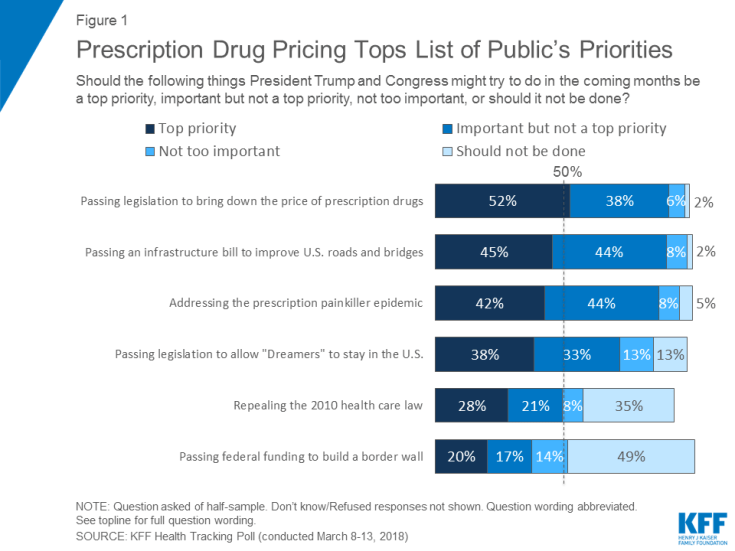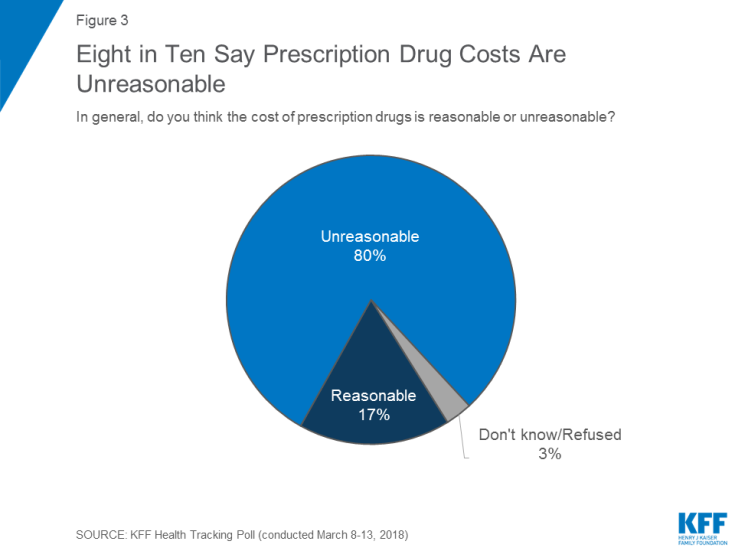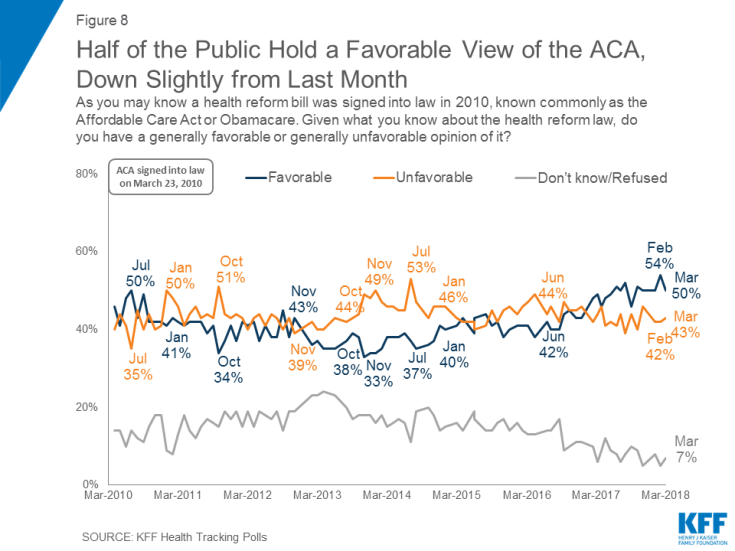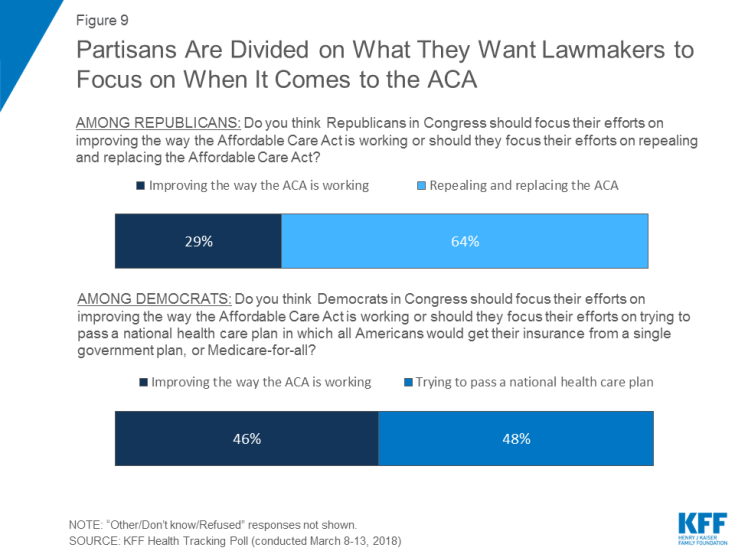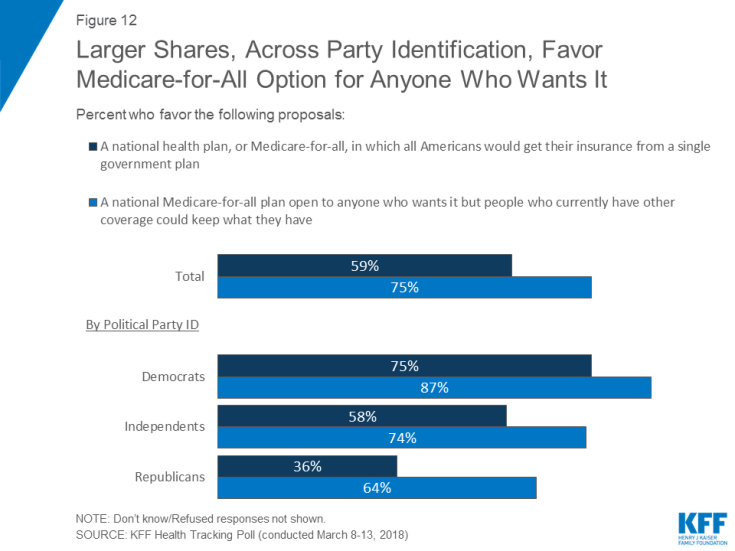Kaiser Health Tracking Poll – March 2018: Views on Prescription Drug Pricing and Medicare-for-all Proposals
Key Findings:
- The March Kaiser Health Tracking Poll finds that more than a year into President Trump’s presidency, half of the public (52 percent) say passing legislation to bring down the price of prescription drugs should be a “top priority” for President Trump and Congress. Yet, less than half of the public (39 percent) say they are confident that President Trump and his administration will be able to deliver on the promise that Americans will pay less for prescription drugs than they pay now.
- Pharmaceutical companies rank among the top organizations that the public – including majorities of Democrats, independents, and Republicans – say has “too much influence” in Washington. Seven in ten (72 percent) say pharmaceutical companies have “too much influence,” which is similar to other entities like large businesses and Wall Street, but much higher than the shares of the public who say the National Rifle Association (NRA), hospital groups, or doctors groups have “too much influence” (52 percent, 36 percent, 30 percent, respectively). There is stronger agreement among partisans on the influence of pharmaceutical companies with majorities of both Democrats (65 percent) and Republicans (74 percent) saying pharmaceutical companies have “too much influence” in Washington.
- This month’s Kaiser Health Tracking Poll finds six in ten (59 percent) favor a national health plan, or Medicare-for-all, in which all Americans would get their insurance from a single government plan – including a majority of both Democrats and independents and about one-third of Republicans. Support for such a proposal increases among the overall public (75 percent) and among partisans (87 percent of Democrats, 74 percent of independents, and 64 percent of Republicans) when framed as an option for anyone who wants it, but people who currently have other forms of coverage can keep the coverage they already have. It is unclear how support would fare if these proposals became part of the larger public debate as previous KFF polling has found the public’s attitudes can be quite malleable.
- Democrats are divided on what they want Democrats in Congress to focus on: improving the Affordable Care Act (46 percent) or trying to pass a national health plan (48 percent). But few voters, regardless of
partisanship, say a candidate’s position on a national health plan will be the most important factor in their vote during the 2018 midterm elections. Among all voters, voters living where there are competitive House, Senate, or Governor races, and Democratic voters, about one in ten say a candidate’s position on a national health plan will be the “single most important factor” in their 2018 vote choice. An additional 69 percent of all voters, and battleground voters, say it will be an “important, but not the most important factor” as do 76 percent of Democratic voters.
The Public’s Priorities for Washington
More than a year into President Trump’s presidency, half of the public (52 percent) say passing legislation to bring down the price of prescription drugs should be a “top priority” for President Trump and Congress to do in the coming months. Fewer – but still about four in ten – say the same about passing an infrastructure bill (45 percent), addressing the prescription painkiller addiction epidemic (42 percent), or passing legislation to allow individuals who illegally came into this country before the age of 16 (known as Dreamers) to legally stay in the country (38 percent). Repealing the Affordable Care Act (ACA) and passing federal funding to build a border wall between the U.S. and Mexico rank at the bottom of the public’s priorities with less than one-third (28 percent and 20 percent, respectively) saying each of these is a “top priority” for the president and Congress.
Public Confidence in President Trump’s Ability to Address Priorities
Four in ten (39 percent) say they are either “very confident” or “somewhat confident” President Trump and his administration will be able to deliver on the promise1 that Americans will pay less for prescription drugs than they pay now – the top priority for the public. The public is somewhat more optimistic in President Trump’s ability to deliver on some of the other promises asked about, including 54 percent who are confident President Trump will deliver on the promise to invest in infrastructure projects like fixing roads, bridges, and schools; passing an infrastructure bill is also a top priority for 45 percent of the public. Ending the prescription painkiller addiction epidemic ranks lowest among the public with three in ten (28 percent) confident President Trump will be able to deliver on this promise.
| Table 1: Public Confidence in President Trump’s Ability to Address Public’s Priorities | ||
| Percent who are confident President Trump’s administration will be able to deliver on this promise | Percent who say each should be a top priority for President Trump and Congress | |
| Passing an infrastructure bill | 54% | 45% |
| Passing comprehensive immigration reform | 48 | 38 |
| Repealing the Affordable Care Act | 47 | 28 |
| Lowering prescription drug prices | 39 | 52 |
| Building a border wall between the U.S. and Mexico | 38 | 20 |
| Ending the prescription painkiller addiction epidemic | 28 | 42 |
Republicans Are More Confident in President Trump’s Ability to Deliver on Promises
The majority of Republicans are confident President Trump and his administration will be able to deliver on most of the promises asked about, with one notable exception – ending the prescription painkiller addiction epidemic. Vast majorities of Republicans are confident in President Trump and his administration’s ability to deliver on infrastructure (87 percent) and on immigration reform (80 percent), while about seven in ten are confident in their ability to repeal the ACA (74 percent), lower the cost of prescription drugs (73 percent), and build a border wall between the U.S. and Mexico (70 percent). Notably, equal shares of Republicans (49 percent) say they are both confident and not confident that President Trump and his administration will be able to deliver on his promise to end the prescription painkiller addiction epidemic.
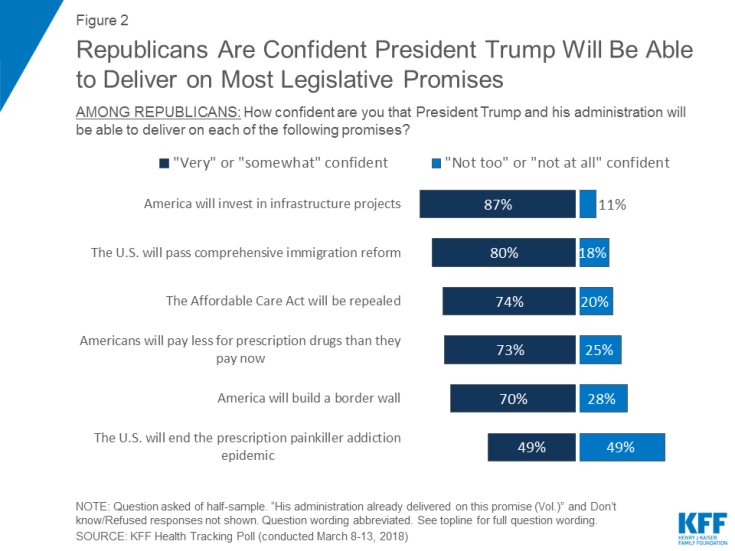
Figure 2: Republicans Are Confident President Trump Will Be Able to Deliver on Most Legislative Promises
Prescription Drug Costs
With prescription drug prices weighing heavily on the minds of the public, this month’s KFF Health Tracking Poll examines the public’s perceptions on the cost of prescription drugs, attitudes towards policymakers’ actions to address drug prices, and views of pharmaceutical companies.
Public Thinks Prescription Drug Costs Are Unreasonable and Lawmakers Aren’t Doing Enough to Address Costs
A large majority (80 percent) of the public perceive prescription drug costs as “unreasonable” while one-fifth (17 percent) say the costs are “reasonable.” The share of the public who say prescription drug costs are unreasonable has increased slightly over the past several years (up from 73 percent in June 2015).
Large majorities of the public say that President Trump, as well as Democrats and Republicans in Congress, are “not doing enough” to bring down the cost of prescription drugs. About eight in ten say Republicans in Congress (83 percent) and Democrats in Congress (82 percent) are “not doing enough,” as do three-fourths (77 percent) who say the same about President Trump and his administration.
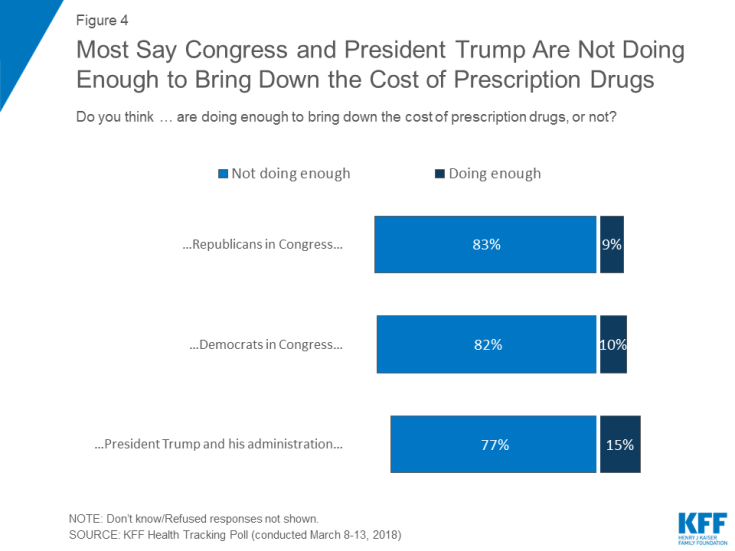
Figure 4: Most Say Congress and President Trump Are Not Doing Enough to Bring Down the Cost of Prescription Drugs
Large shares across partisans not only say that lawmakers from the opposite party are “not doing enough” to bring down the cost of prescription drugs, but also say lawmakers from their own party are “not doing enough.” About three-fourths (77 percent) of Democrats and Republicans (72 percent) say lawmakers from their own party in Congress “are not doing enough.” The vast majority of Democrats (91 percent) and independents (80 percent) say President Trump and his administration “are not doing enough” to bring down the cost of prescription drugs. But Republicans are less harsh in their judgment of President Trump; 56 percent say he is “not doing enough” and one-third say his administration is “doing enough.”
| Table 2: Majorities Across Parties Say Politicians Are Not Doing Enough to Bring Down the Cost of Prescription Drugs | |||
| Percent who say each of the following are not doing enough to bring down the cost of prescription drugs: | Democrats | Independents | Republicans |
| President Trump and his administration | 91% | 80% | 56% |
| Democrats in Congress | 77 | 87 | 85 |
| Republicans in Congress | 90 | 88 | 72 |
Increase in the Share of the Public Who Don’t Trust Either Political Party to Lower Prescription Drug Costs
When asked which political party they trust to do a better job at lowering prescription drug costs, a larger share of the public say they trust the Democratic Party (44 percent) to do a better job than the Republican Party (30 percent). The share of the public who explicitly mention “neither,” when asked which party they trust to do a better job at lowering the cost of prescription drugs has increased from 12 percent in 2016 to 21 percent in 2018. Vast majorities of both Republicans and Democrats say they trust their own political party to do a better job handling this issue (78 percent and 84 percent, respectively) and very few say they trust the opposing party (4 percent and 5 percent, respectively). A larger share of independents say they trust Democrats (38 percent) than Republicans (24 percent), but one-third of independents (32 percent) say they trust “neither” to do a better job.
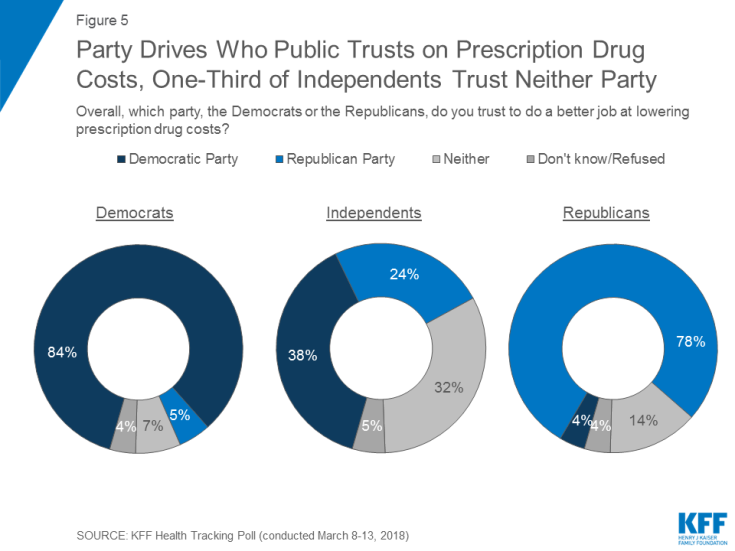
Figure 5: Party Drives Who Public Trusts on Prescription Drug Costs, One-Third of Independents Trust Neither Party
Pharmaceutical Companies Rank Among Top Organizations Perceived as Having Too Much Influence in Washington
Overall, pharmaceutical companies rank among the top of a list of organizations that the public says has “too much influence” in Washington. Seven in ten (72 percent) say pharmaceutical companies have “too much influence,” which is similar to the share who say the same about large businesses (76 percent), Wall Street (69 percent), and health insurance companies (66 percent). All of these organizations rank higher than the National Rifle Association (NRA), which has been in the news due to recent school shootings and subsequent protests. About half (52 percent) of the public feels the NRA has too much influence in Washington.
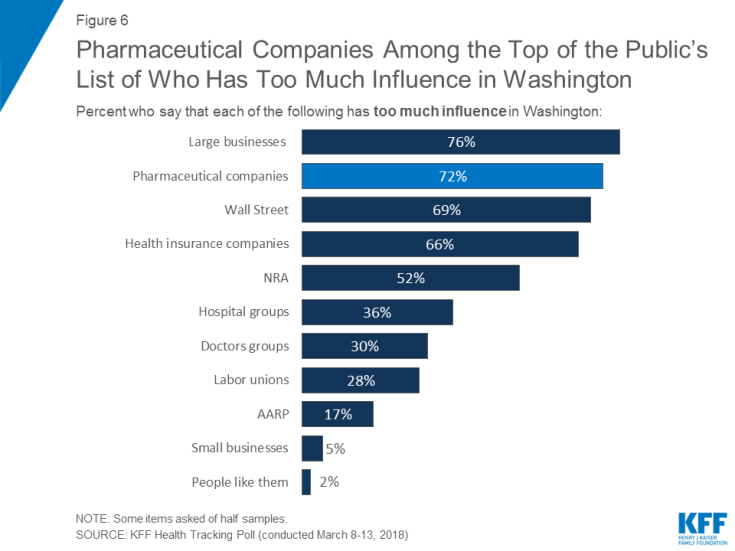
Figure 6: Pharmaceutical Companies Among the Top of the Public’s List of Who Has Too Much Influence in Washington
There is stronger agreement among partisans on the influence of pharmaceutical companies and other health care-related organizations than organizations like the NRA and labor unions. While majorities of both Democrats (65 percent) and Republicans (74 percent) say pharmaceutical companies have “too much influence” in Washington, there is a strong partisan divide on the perceived influence of the NRA, with three-fourths of Democrats (73 percent) saying it has “too much influence” compared to one-fifth of Republicans (21 percent), and of labor unions (12 percent of Democrats, 49 percent of Republicans). Other groups that had shared partisan consensus include health insurance companies, doctors groups, small businesses, and people like you.
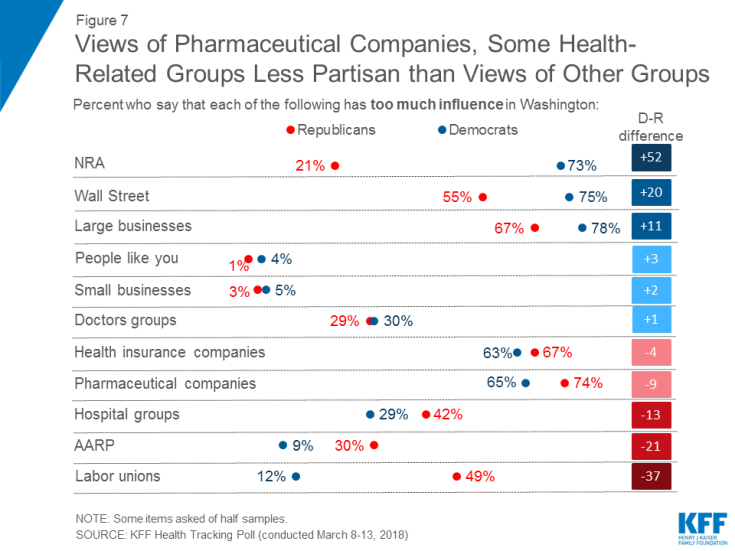
Figure 7: Views of Pharmaceutical Companies, Some Health-Related Groups Less Partisan than Views of Other Groups
Affordable Care Act
Half of the public now holds a favorable view of the 2010 Affordable Care Act (ACA) while 43 percent hold an unfavorable view of the law. This is down slightly from February 2018, when KFF recorded the highest level of favorability since tracking attitudes on the law began in 2010. Partisans’ views remained stable with the vast majority of Democrats continuing to view the law favorably (73 percent) and the vast majority of Republicans continuing to hold unfavorable views (78 percent), while the share of independents with favorable views slipped from 55 percent last month to 47 percent this month.
Partisans also hold different views on what they want Congress to do when it comes the ACA. Two-thirds (64 percent) of Republicans think that Republicans in Congress should focus their efforts on repealing and replacing the Affordable Care Act while three in ten (29 percent) say Republicans in Congress should focus on improving the way the ACA is working. Democrats, on the other hand, are more divided in their views of how Democrats in Congress should focus their efforts with similar shares saying they should focus on improving the way the ACA is working (46 percent) or trying to pass a national health care plan in which all Americans would get their insurance from a single government plan (48 percent).
National Health Plan in 2018 Midterm Elections
Few say a candidate’s position on a national health plan will be the most important factor in their vote during the 2018 midterm elections. Among all voters as well as voters living where there are competitive House, Senate, or Governor races, seven percent say a candidate’s position on a national health plan will be the “single most important factor” in their 2018 vote choice. An additional seven in ten (69 percent) say it will be “important, but not the most important factor,” while about a fourth (22 percent of voters and 24 percent of battleground voters) say it is “not an important factor.” The share of voters who say it will be the most important factor in their 2018 vote choice is similar among Democratic voters (11 percent) and among voters who favor either of the Medicare-for-all proposals included in this month’s tracking survey (9 percent).
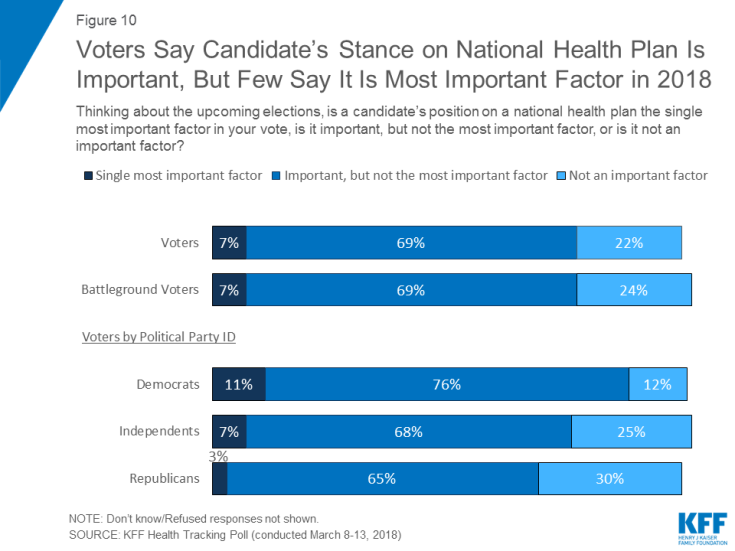
Figure 10: Voters Say Candidate’s Stance on National Health Plan Is Important, But Few Say It Is Most Important Factor in 2018
2018 Midterm Election Analysis
As part of Kaiser Family Foundation’s effort to examine the role of health care in the 2018 midterm elections, throughout the year we will be tracking the views of voters – paying special attention to those living in states or congressional districts in which both parties have a viable path to win the election. This group, referred to in our analysis as “voters in battlegrounds” is defined by the 2018 Senate, House, and Governor ratings provided by The Cook Political Report. Congressional and Governor races categorized as “toss-up” were included in this group. A complete list of the states and congressional districts included in the comparison group is available in Appendix A.
Medicare-for-all Proposals
While many want Democrats in Congress to focus on improving the way the ACA is working rather than trying to pass a national health care plan, there is support for such a proposal. This month’s Kaiser Health Tracking Poll finds six in ten (59 percent) favor a national health plan, or Medicare-for-all, in which all Americans would get their insurance from a single government plan. Support for such a proposal increases when framed as an option for anyone who wants it; three-fourths of the public favor a national Medicare-for-all plan open to anyone who wants it, but would allow people who currently have other forms of coverage to keep the coverage they already have.
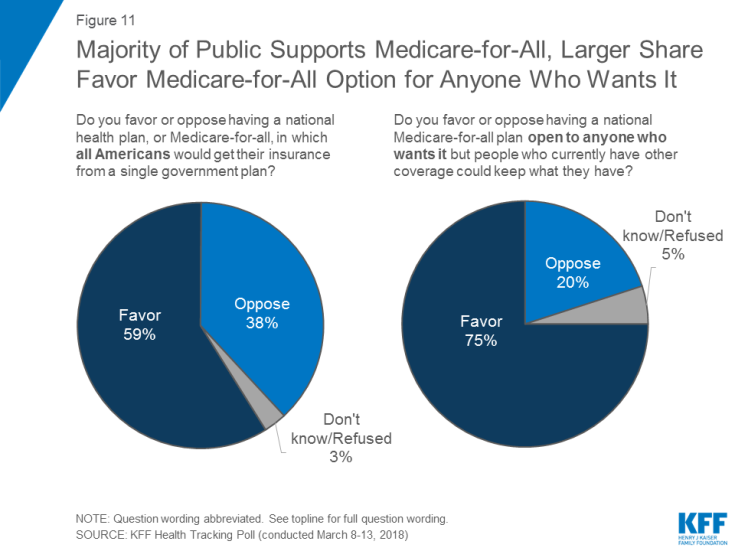
Figure 11: Majority of Public Supports Medicare-for-All, Larger Share Favor Medicare-for-All Option for Anyone Who Wants It
The majority of Democrats and independents support both of these Medicare-for-all proposals. On the other hand, one-third (36 percent) of Republicans support having a national health plan in which all Americans would get their insurance from a single government plan, but support increases to 64 percent when asked about a national Medicare-for-all plan open to anyone who wants it, but would allow people to keep the coverage they already have. It is unclear how support levels would fare once each of these proposals became part of the larger public debate on health care in this country. Prior Kaiser Family Foundation surveys have found the public’s attitudes can be quite malleable, and some people could be convinced to change their position after hearing typical pro and con arguments that might come up in a national debate.2

